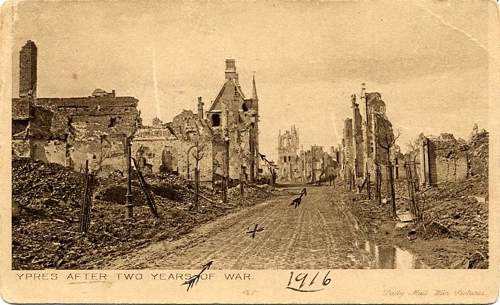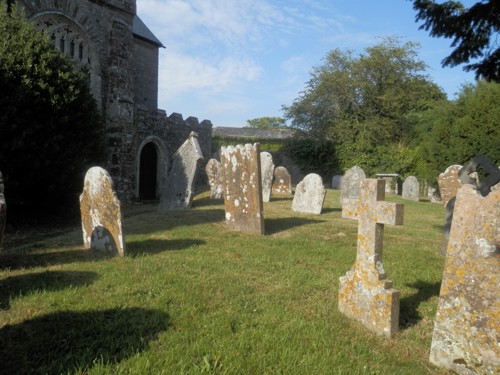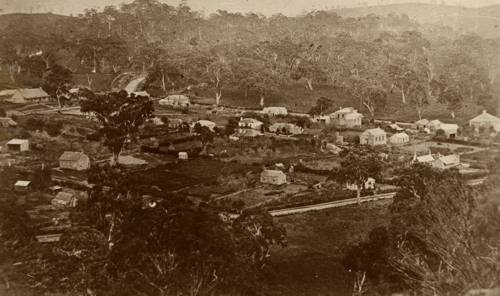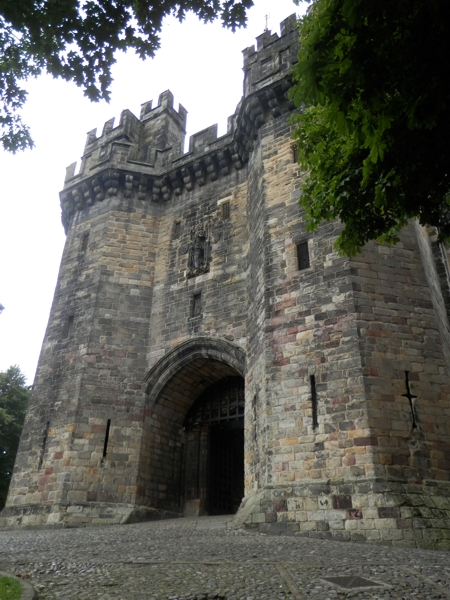Women’s History Month Blog Challenge
March is Women’s History Month in the United States, the United Kingdom, and Australia. So fellow genealogists, historians and bloggers, join with me in participating in Women’s History Month by highlighting some of the incredible women from history.
You may like to choose an ancestor or two to write about. Or maybe a female who has made an impact in your local area, or maybe even any of the inspiring women from history around the globe. The choice is yours, take your pick.
One thing does seem to be a recurring trait – and that is that women’s history doesn’t get written about nearly enough. They were often the backbone of not only a family, but society itself.
They lived, they worked, they got into trouble, they struggled, they triumphed, they were inspirational. Every woman has a story. They helped make history!
So let’s do what we can to recount some of their stories and make sure they are not forgotten.
For more about Women’s History Month, be sure to check out their website, and also Wikipedia.
#WomensHistoryMonth
My Own Ancestral Places Geneameme
What places do your ancestors come from? That was the question I asked when I created Ancestral Places geneameme.
And I know it’s taken me a while, but I finally got around to doing my own response to the geneameme. But as there’s no time limit, that’s not a problem.
The idea is to list places that are relevant to your ancestors. Most of those listed below are birth places, with a few residences, and a few places of death listed as well. And apparently I have no places for X and Z as yet … maybe one day!
Anyway compiling the list has made me realise that I REALLY (and I mean REALLY) must get to entering information from “THE PILE”, as I know I have more precise details for many, but they’re not entered into my genealogy program. So I do need to take (or should I say “make”) some time to work my way through the giant pile of unentered paperwork. But it’s been a great exercise to do, and it’s interesting seeing multiple families from the same place – often from different lines. So it makes you wonder, did they know each other?
I’ve chosen to include a number of Mr Lonetester’s branches here as well as my own, even though I’m not actively researching them … I still felt they should be mentioned, so did so.
A
Antwerp, Belgium (Godschall-Johnson)
B
Babington, Somerset, England (Richardson)
Bere Ferres, Devon, England (Treffry)
Berry Pomeroy, Devon, England (Randell)
Bunbury, Western Australia, Australia (Elphick)
C
Campbelltown, New South Wales, Australia (MacDonald)
Cranford, Northamptonshire, England (Robbins, Holland)
Cudlee Creek, South Australia, Australia (Hannaford, Kelly)
D
Dover, Morris Country, New Jersey, USA (Trewartha)
Durham, England (Todd)
E
Epping Forest, London, England (Daley)
Exeter, Devon, England (Tothill, Treffry)
F
Findon, South Australia, Australia (Robbins, Holland, Winter)
G
Glenelg, South Australia, Australia (Cosgrove)
Glen Osmond, South Australia, Australia (Phillips)
Gould Creek, South Australia, Australia (Gould)
Groningen, Netherlands (Beken)
Gumeracha, South Australia, Australia (Randell)
H
Hamburg, Gemany (Beecken)
Hausjärvi, Finland (Backberg)
Heavitree, Devon, England (Tothill)
Helsinki, Finland (Winter)
High Ham, Somerset, England (Gould)
Hobart, Tasmania, Australia (Billing)
I
Isle of Man, United Kingdom (Kelly)
Ireland (Lucas, McGrath)
J
Jamestown, South Australia, Australia (McDonald, Perry)
K
Kadina, South Australia, Australia (Kemp, Phillips)
Kanmantoo, South Australia, Australia (Kuchel)
Kenton, Devon, England (Randell, Tothill)
Kenwyn, Cornwall, England (Trewartha)
Kettering, Northamptonshire, England (Robbins)
Kilkenny, Ireland (Butler)
Kokemäki, Finland (Eriksson, Erävuori)
L
Lamorran, Cornwall, England (Kemp)
Lancaster, Lancashire, England (Hayhurst)
Langmeil, Brandenburg, Prussia (Kuchel)
Launceston, Tasmania, Australia (Kerslake)
Leppävirta, Finland (Peura)
London, England (Cosgrove, Daley)
Longford, Tasmania, Australia (Richardson)
M
Mäntsälä, Finland (Vinblad)
Modbury, South Australia, Australia (Phillips)
Moonta, South Australia, Australia (Cathery, Elphick, Phillips)
Mount Barker, South Australia, Australia (McCullough)
Murray Bridge, South Australia, Australia (McDonald)
N
Nailsworth, South Australia, Australia (Ware)
Naracoorte, South Australia, Australia (Hannaford)
O
Oare, Kent, England (Smith)
P
Parham, Sussex, England (Bisshopp)
Parramatta, New South Wales, Australia (Warby)
Penryn, Cornwall, England (Treffry)
Petersfield, Hampshire, England (Remnant)
Port Adelaide, South Australia, Australia (Elliott, Kemp)
Portsmouth, Hampshire, England (Cathery)
Pulborough, Sussex, England (Bisshopp, Piper)
Q
Quernmore, Lancashire, England (Hayhurst)
R
Rabaul, Papua New Guinea (Hannaford)
Randalstown, Antrim, Ireland (McCullough)
Rattery, Devon, England (Elliott, Hannaford)
Redruth, Cornwall, England (Banfield, Phillips, Trewartha)
Riverton, South Australia, Australia (Hannaford)
Rockaway, Morris County, New Jersey, USA (Trewartha)
S
Scharmbeck, Lower Saxony, Germany (Beken/Beecken/Beeken)
Scotland (MacDonald, McDonald) – oh, won’t this be fun … NOT!
Sheffield, Tasmania, Australia (Liddell)
Stockholm, Sweden (Winter)
Sulby Glen, Isle of Man, United Kingdom (Kelly)
Sussex, England (Tester)
T
Tasmania, Australia (Kerslake)
Thebarton, South Australia (Winter)
Totnes, Devon, England (Elliott)
U
Ulverstone, Tasmania, Australia (Pointon)
Unley, South Australia, Australia (Elliott)
V
Viipuri, Finland (later Viborg, RUS) (Eriksson, Winter)
Villers Bretonneux, France (Kerslake)
W
Wallaroo, South Australia, Australia (Phillips)
West Ham, Essex, England (Cathery)
Western Australia, Australia (Elphick)
Westbourne, Sussex, England (Cathery)
Westbury, Tasmania, Australia (Richardson)
X
Y
Ypres, Belgium (Winter)

postcard from Otto Winter to his parents-in-law in South Australia, showing where he was at Ypres during WW1
Z
NFHM Blog Challenge Week 4: Month
With August progressing, as is National Family History Month, here is my final post for the NFHM Blog Challenge, and this week the topic is “Month”.
Out of the four weeks of topics (National, Family, History, Month), this has proved the hardest in coming up with something, but as I am a fan of “on this day” history, I have settled for giving an “on this day” history of events that have taken place during the month of August.
Covering Australian related history as well as overseas, some events date back hundreds of years, while others are relatively recent and you’re likely to remember. Some certainly changed the world, while others you probably didn’t even know about. Still I find it fascinating to find out what happens in history, so here’s a little taster of August …
1 August 1831 – New London Bridge is opened, replacing the 600-year-old London Bridge
2 August 1997 – After three days, skiing instructor Stuart Diver is pulled alive from the rubble of the collapsed Thredbo resorts
3 August 1990 – The highest temperature ever known in Britain is recorded in Leicestershire … at 37C
4 August 1906 – Central Railway Station in Sydney is opened.
5 August 1914 – Australia enters World War I.
6 August 1945 – The first atomic bomb is dropped on the Japanese city of Hiroshima.
7 August 1928 – Dingo hunter Frederick Brooks is killed, sparking the Coniston Massacre of Australian Aborigines.
8 August 1789 – The first police force in the convict colony of New South Wales is formed.
9 August 1173 – Construction begins on the Tower of Pisa, which is later to become the famous Leaning Tower of Pisa.
10 August 1844 – Charles Sturt sets out on his final expedition to search for an inland sea in Australia.
11 August 1824 – New South Wales is constituted a Crown Colony.
12 August 1829 – The city of Perth, Western Australia, is founded.
13 August 1888 – John Logie Baird, inventor of television, is born.
14 August 1861 – William Landsborough organises a relief expedition to find missing explorers Burke and Wills.
15 August 1904 – Dalgety is named as the site of the future Federal Capital Territory of Australia
16 August 1995 – Microsoft launches the first version of Microsoft Internet Explorer
17 August 1813 – Matthew Flinders writes to Sir Joseph Banks, outlining his reasons for suggesting New Holland be called Australia, after Banks disapproves of the name.
18 August 1786 – The decision is made in England to colonise New South Wales with convicts from Britain’s overcrowded gaols.
19 August 1839 – Louis Daguerre invents the daguerreotype photographic process, allowing an image to be chemically fixed as a permanent picture.
20 August 1908 – The first successful Australian transcontinental motor car journey is completed.
21 August 1990 – The announcement is made that the Australian 1 cent and 2 cent coins will be withdrawn from circulation.
22 August 1917 – Stockman Jim Darcy dies, causing a chain of events that eventually leads to the founding of Australia’s Flying Doctor Service.
23 August 1617 – The first one-way streets are opened in London.
24 August 1995 – Windows 95 is released by the Microsoft Corporation.
25 August 1944 – Paris is freed after four years of German occupation.
26 August 1835 – Governor Bourke declares John Batman’s treaty with Aborigines, which enabled the founding of Melbourne, to be invalid.
27 August 1970 – The Southern hairy-nosed wombat is adopted as the official faunal emblem of South Australia.
28 August 1894 – Paddlesteamer, the “Rodney”, is burnt by unionist shearers in protest at it being used as a strike breaker.
29 August 1941 – Arthur Fadden, the second of five men who served as Australian Prime Minister during World War II, is sworn into office.
30 August 1853 – The last ship to carry convicts directly from Ireland to Australia arrives in Fremantle.
31 August 1882 – Cricket’s legend of The Ashes is born with the first of two mock obituaries lamenting England’s loss to Australia.
For more “on this day” history, check out the 1000s of entries on the This Day in History website.
NFHM Blog Challenge Week 3: History
August continues, and so does National Family History Month, and now I’m up to Week 3 of the Blog Challenge, and this week my topic is “history”.
But history is such a broad topic. Family history, social history, local history, ancient history, heirlooms … oh the list goes on. What do I write about? Well it took a while to work it out, but for Week 3 I’ve chosen something that not enough people think about, and that is “Present History”.
As historians and researchers it’s natural that we focus on the past. Our parents, grandparents, great greats and so on. The further back the better. And there is nothing wrong with that at all.
But we also need to remember that “today is tomorrow’s history”, so we should be recording our OWN history. Now. While we can. Afterall you know your life better than anyone else right?
But HOW do you record your own history?
Most people will come up with an excuse along the lines of “my life isn’t interesting”, or “I can’t write” … or both. You don’t need to write a novel, you just need to record life as it happens along with your memories.
Some of my family are avid diary writers, and for that I am eternally grateful. Not only has it instilled the diary-writing ethic into me from a young age (and I “mostly” still do it), it means that my parents are diary writers, my grandparents too, my great aunts were, my great grandma was too, and even a great great grandma. We are fortunate that a number of these diaries have survived, and that we are able to “see” life as it was, through their words. When flowers were planted, who preached at church, who came to visit, who was unwell, what they bought or made, family celebrations, what the weather was like, when babies were born, or others died and so on.
A favourite entry from my great grandma’s diary is as follows …
“August 19th [1900] Mr W.J. Hannaford came over to dinner with JBR, had a good time, then Mr Hannaford went to school, and my beloved and I walked up the flat and all up round the peas, it was very sloppy.”
[Note: to put that in context, there had been a lot of rain in the previous days, hence the reference to the ‘sloppy’ paddock or vegie patch.]
I’m not saying that you all have to start writing a diary now, but if you do, good on you, your descendants will thank you for it. But what I am suggesting is to dedicate a little time each week to writing about your life.
But WHAT do I write about?
Anything and everything. There are oodles of suggestions, like those as part of the “Genealogy and the 52 Week Challenge“. So grab yourself a notebook and a pen, and you’re good to go.
If you want something a little more structured there are some really fabulous Q&A fill-in books. Created with a question written at the top of each page, the rest of the page is left blank for you to write your response. The questions in the Book of Myself and the Book of Us will make you think, as they are not just the standard ones – which make them really good. Pick and choose the questions you wish to answer – but I guarantee that much of what you record will be information your family would not have known about, and won’t unless it’s recorded:
– The Book of Myself: A Do-it-Yourself Autobiography in 201 Questions
– The Book of Us: A Journal of Your Love Story in 150 Questions
– Story of My Life: A Workbook for Preserving Your Legacy
So do yourself a favour, and do your descendants a favour, and record the present. Record YOUR own history. That is just as important, and it really is the best heirloom you can leave them.







